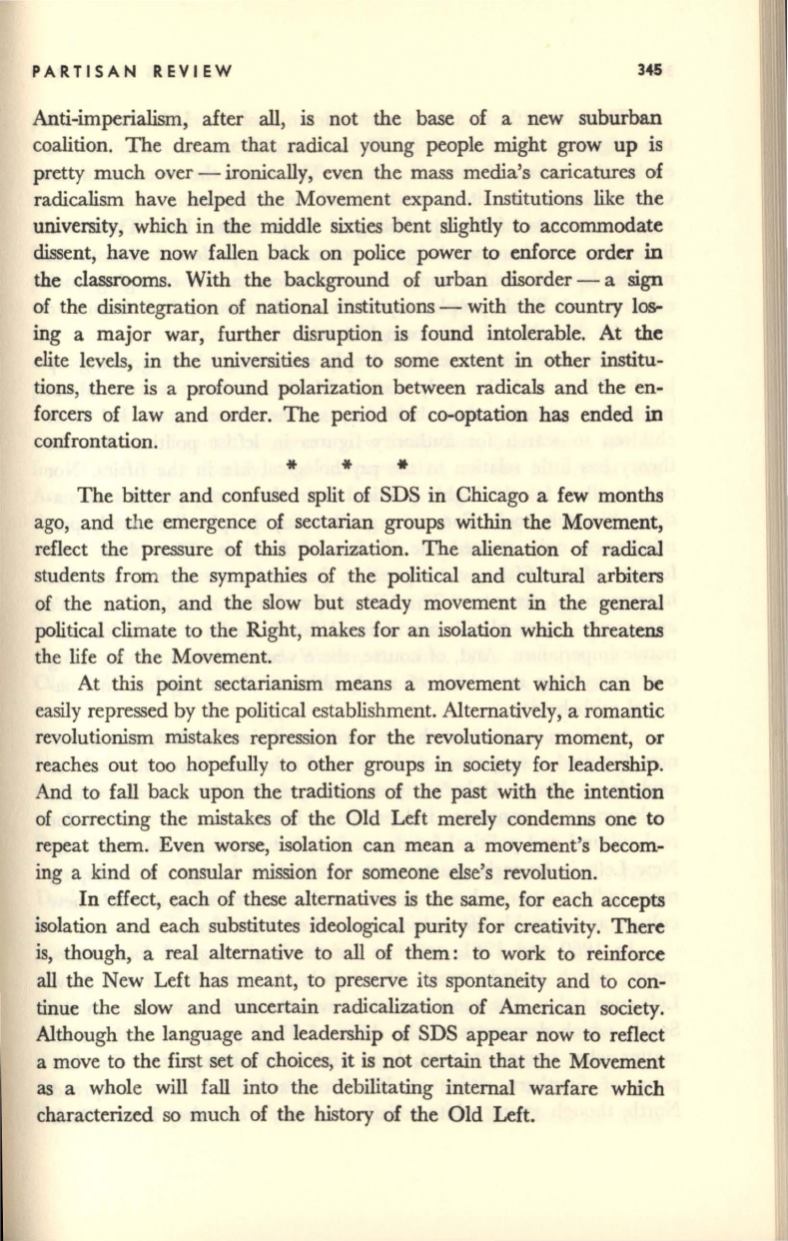
PARTISAN REVIEW
345
Anti-imperialism, after
all,
is not the base of a new suburban
coalition. The dream that radical young people might grow up is
pretty much over - ironically, even the mass media's caricatures of
radicalism have helped the Movement expand. Institutions like the
university, which in the middle sixties bent slightly to accommodate
dissent, have now fallen back on police power to enforce order
in
the classrooms. With the background of urban disorder - a
sign
of the disintegration of national institutions - with the country los–
ing a major war, further disruption is found intolerable. At the
elite levels, in the universities and to some extent
in
other institu–
tions, there is a profound polarization between radicals and the en–
forcers of law and order. The period of co-optation has ended
in
confrontation.
*
* *
The bitter and confused split of SDS in Chicago a few months
ago, and the emergence of sectarian groups within the Movement,
reflect the pressure of this polarization. The alienation of radical
students from the sympathies of the political and cultural arbiters
of the nation, and the slow but steady movement
in
the general
political climate to the Right, makes for an isolation which threatens
the life of the Movement.
At this point sectarianism means a movement which can be
easily repressed by the political establishment. Alternatively, a romantic
revolutionism mistakes repression for the revolutionary moment, or
reaches out too hopefully to other groups in society for leadership.
And to fall back upon the traditions of the past with the intention
of correcting the mistakes of the Old Left merely condemns one to
repeat them. Even worse, isolation can mean a movement's becom–
ing a kind of consular mission for someone else's revolution.
In effect, each of these alternatives is the same, for each accepts
isolation and each substitutes ideological purity for creativity. There
is, though, a real alternative to all of them: to work to reinforce
all
the New Left has meant, to preserve its spontaneity and to con–
tinue the slow and uncertain radicalization of American society.
Although the language and leadership of SDS appear now to reflect
a move to the first set of choices, it is not certain that the Movement
as a whole will fall into the debilitating internal warfare which
characterized so much of the history of the Old Left.


